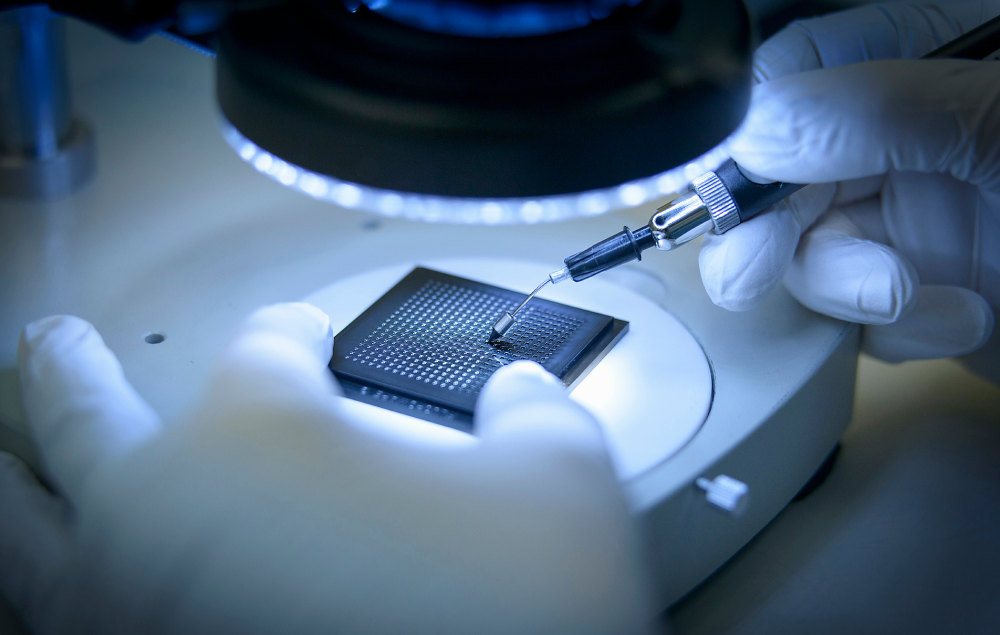UK-based unicorn Newcleo is on a mission to raise €1bn in equity this year.
The nuclear energy startup is developing small modular reactors (SMRs) fuelled with radioactive waste, and the first close could come as soon as April, founder and CEO Stefano Buono tells Sifted.
If it lands the round, the raise will be the second largest in the nuclear sector globally — and the largest, by some way, in Europe.
It’s piqued the interest of European governments increasingly keen to shore up their energy sovereignty in the face of climate change and Russia’s war in Ukraine — and of investors (including the French government), who’ve written cheques to the tune of €400m since the startup launched in 2021.
But if Newcleo is to achieve its lofty ambitions, it’ll need billions more by the end of the decade.
The startup plans to complete a research facility in Italy by 2026, as well as a fuel processing plant and a demonstrator reactor in France by 2030. And that’s before it launches its first revenue-making commercial reactor — possibly in the UK, says Buono — sometime after 2033 and then — eventually — deploys a fleet of its reactors across Europe.
To get there, it will need to find big cheque investors with the patience of saints and convince governments to cough up their nuclear waste.
Next generation reactors
A reactor is a device used at nuclear power plants to generate electricity. Newcleo is developing lead-cooled SMRs that run on nuclear material produced as a by-product of other reactors — one of six types of so-called fourth-generation reactors (also known as advanced reactors) which will begin to be rolled out around the globe in the 2030s.
SMRs are, as the name suggests, smaller than traditional reactors and can be built at a fraction of the cost — and, in theory, due to their advanced tech, can be more efficient. A traditional reactor has a 1GW capacity — enough to power around 876k homes — whereas Newcleo’s intends to produce 200MW, which the company says will be able to power 400k.
Typically, a nuclear reactor uses water to cool the core and stop it from overheating. But because the boiling point of water is just 100°C, huge disasters like Chernobyl and Fukushima, although rare, are not unheard of.
Newcleo says its lead-cooled SMRs will be safer than traditional water-coolant tech because the boiling point of lead is so much higher — 1737°C — reducing the chance of a meltdown.
As lead can reach higher temperatures than water it also means Newcleo’s reactors will be able to produce more energy using less fuel, says UK general manager Andrew Murdoch.
“One of the ultimate aims is to continue increasing the temperature of operation within lead because as you go up in temperature, you go up in efficiency,” he tells Sifted.
Both lead-cooled reactors and SMRs are new and have not been proven on a commercial scale yet, but Newcleo isn’t the only European startup working on the technology. Sweden’s Blykalla is also developing them and says its SMRs need just 800 tonnes of lead compared to the 100k tonnes of water a water-cooled SMR of a similar size would need.
Re-using radioactive waste
All of the fuel used in Newcleo’s reactors will come from reprocessed nuclear waste — called mixed oxide fuel (MOX).
The fuel choice isn’t novel — third-generation nuclear reactors, which have been around since the 1990s, can use it — but it sets Newcleo apart from a number of other companies developing advanced reactors. Most of those use high-assay low-enriched uranium (HALEU) — which has a high concentration of isotope U-235, the element needed for nuclear fission — and is typically considered more efficient than MOX.
HALEU, however, comes with supply chain issues, as the only countries that can produce the enriched uranium needed for the fuel at scale are Russia and China. While countries like the US, UK and France have all begun HALEU production programmes, it could be years before domestic supplies become available.
But MOX fuel has its downsides too. Newcleo is reliant on deals with governments to access their stores of nuclear waste — and they’re not always happy to hand it over.
The company announced it had shelved plans to build a fuel manufacturing factory in the UK earlier this year after the government said its 140 tonnes of waste plutonium would not be available for use in advanced modular reactors, says Murdoch.
Other countries have been more accommodating, though. After reported courting from French president Emmanuel Macron — and promises of access to nuclear waste to process into fuel for its reactor — Newcleo is planning on building its fuel factory in southern France. The startup plans to complete the build by 2029 and says the factory will create around 1000 jobs.
Excited investors
Three years ago François Breniaux, general partner at French VC Superinvest “never imagined” the firm would back any nuclear startups — but the war in Ukraine pushed European countries to look for energy alternatives to gas and oil, he says.
It’s now doubling down on the sector. The VC backed its first nuclear startup, Stellaria, in a €1.7m seed round in January this year, and is planning on closing three more deals in the sector over the next two to three months.
It’s not the only VC excited about the sector. Since 2020, European nuclear startups have raised $1.1bn, according to Dealroom — 10 times what they had across the previous 10 years combined.
Investor interest is growing because there are signals that a number of countries in Europe are more open to adopting new nuclear systems than the US, says Cameron Porter, partner at US VC Steel Atlas — which was involved in a $23.3m Series A for Swiss nuclear startup Transmutex in January this year.
While the US has a “regulatory regime that is notoriously difficult for startups to work with, Switzerland has advanced nuclear waste plans, Sweden is a forward-thinking place with ideas about how to adopt SMRs and France is at the forefront of currently deployed nuclear,” Porter tells Sifted.
Twenty-two nations — with 14 from Europe — including the US, UK, France and Sweden, signed a declaration to triple their nuclear energy output by 2050 at COP 28 last year. Several governments in Europe have also pledged hundreds of millions or more to develop their nuclear sectors in recent times.
“[Government’s] focus has changed to energy independence and energy security in the context of other parties who control your access to fuel,” says Newcleo’s Murdoch.
It’s one of the reasons Newcleo plans to stay in Europe for now, with the UK at its HQ and France its hub for fuel processing. “At the moment, the US is not supporting the strategy of multi-recycling fuel — but this is supported by France,” says Buono.
Can Europe’s nuclear sector raise the billions it needs?
While funding in Europe has shot up over the past few years, bringing the region’s fourth-generation reactors to market will require tens of billions more.
Newcleo alone will need to invest €3bn in France by 2030 to build its fuel processing plant and a 30MW demonstrator reactor. And that’s all before it builds a commercial reactor — “possibly” in the UK, says Buono — which it hopes to have completed by 2033.
While several companies have raised megarounds in the US — since 2021, deals like Commonwealth Fusion Systems’ $1.8bn, TerraPower’s $750m and Helion Energy’s $500m have rolled in — the sector has hit funding troubles in the past year.
Startup reactor plans have fallen through and huge deals have collapsed as rising interest rates, inflation and the nuclear industry’s poor record of delivering projects on time have dented investor confidence, the FT reported in December.
The cash crunch saw total investment into US nuclear startups drop to $246m in 2023 — a fraction of the $4.3bn picked up the two previous years.
Funding in Europe rose from $140m in 2021 to $541m in 2022 (propped up by €100m and €300m raises from Newcleo) before falling to $182m in 2023.
Newcleo hopes to raise from family offices, high net-worth individuals and institutional investors. Existing backers include US VC Exor Ventures, the investment vehicle of the Agnelli family office — founder of Italy’s largest carmaker Fiat, Italian investor Azimut Group and Italian tech transfer fund LIFTT.
And for future fundraises, Newcleo could look to tap public funds in the form of tax credits too, says Buono.
While there’s no playbook for what Newcleo is trying to do in the European nuclear sector, it can look to other energy infrastructure companies in the region that have raised the big bucks in recent times for inspiration — like Swedish duo electric battery maker Northvolt and sustainable steel producer H2 Green Steel.
Northvolt has picked up $13bn in debt, grants and equity — including a €5bn loan in January this year — and H2 Green Steel’s €4.5bn debt and equity raise the same month brought its total funding to €6.5m.
What’s next?
Fundraising isn’t the only thing on Buono’s plate. There are also acquisitions to be made and people to hire.
This year Newcleo plans to acquire “more companies that can be part of its supply chain” and, crucially, have their own revenues, says Buono — in order to prop up the balance sheet until Newcleo is able to commercialise its reactors in the 2030s.
The company is currently making €40m in revenue, says Buono — exclusively generated by the four companies Newcleo has acquired so far. Those include Italian nuclear systems designer SRS-Fucina Group and Swiss nuclear pump maker Rütschi Group, which sell their products and services to other nuclear providers.
Other revenue streams could come from licensing the use of Newcleo’s demonstrator facility or fuel processing plant to other nuclear providers, adds Buono.
Newcleo’s 600 employees are hoped to increase to around 1000 by the end of the year, with staff roughly evenly split between the UK, France and Italy — and a smaller number in Switzerland.
And then there’s the small matter of convincing investors to part with €1bn during a downturn.


